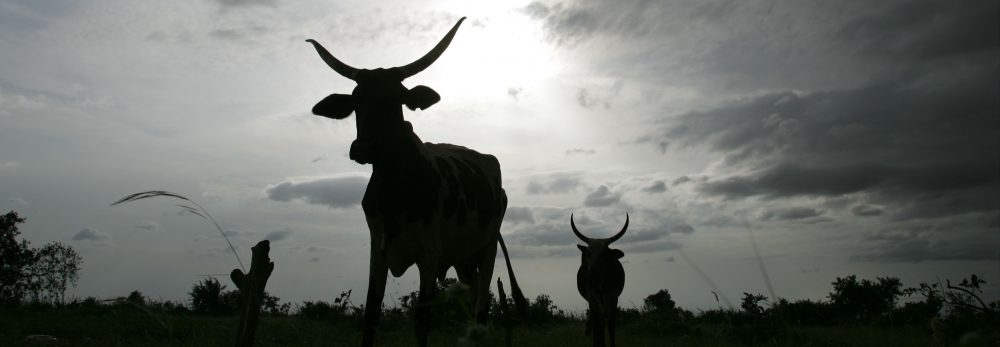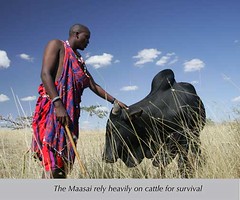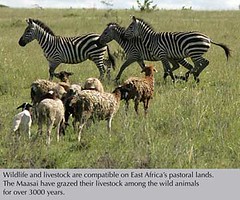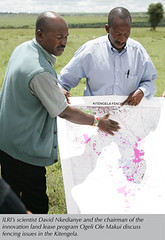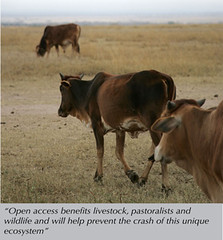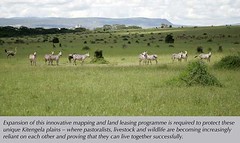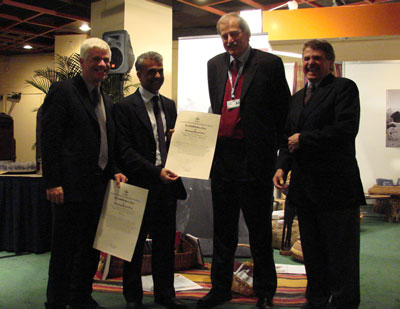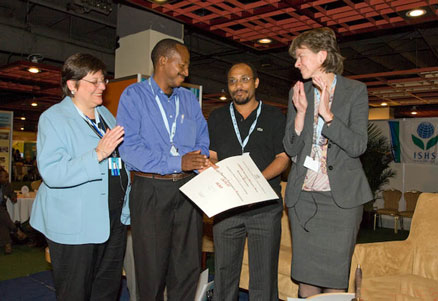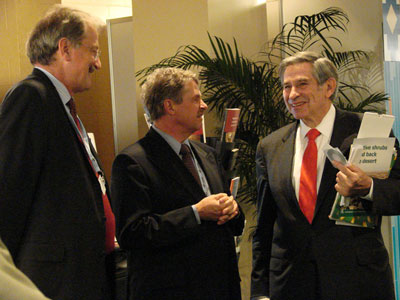African trypanosomosis is a deadly disease that affects millions of people and livestock in sub-Saharan Africa. Will this disease decrease in importance over the coming years, or will it continue its devastation?
The current and future importance of African trypanosomosis was one of many issues discussed by a group of experts from veterinary, medical and associated professions who met at the International Livestock Research Institute (ILRI) in Nairobi in early June for two back-to-back scientific workshops. The Doyle Foundation workshop was held 6-7 June 2006 followed by the Wellcome Trust-funded Host-Pathogen workshop 8-9 June.
|
The purpose of the Doyle Foundation workshop on African trypanosomosis was to take a broader view of the human and animal health aspects of African trypanosomosis and to initiate an analysis of the current/future importance of the disease, control strategies/options, research gaps, future directions and opportunities for investment. |
New science can lead to new opportunities, particularly for building synergies between approaches to animal and human forms of African trypanosomosis. Considerable work is being undertaken by a wide range of specialists – but this work is often undertaken in isolation of other experts in other disciplines. As the number of zoonotic diseases increases, the lines between medical and veterinary sciences will become increasingly blurred and there are many opportunities to share knowledge within and between disciplines and sciences.
The Doyle Foundation Chair Gabrielle Persley opened the first workshop with the following observations: ‘African trypanosomosis is a neglected disease. It is endemic in large areas of sub-Saharan Africa and causes great losses and hardship. This meeting is the beginning of a broader consultation that aims to identify the researchable issues and facilitate new multidisciplinary partnerships that can contribute to improving the well-being and productivity of people and livestock in Africa.’
Terry Pearson from the University of Victoria, in Canada, referred to African trypanosomosis as a sleeping dragon. ‘It sleeps for long periods, then reawakens and flares into an epidemic. There have been two major sleeping sickness epidemics in the past 120 years, each of which killed nearly a million people. Recently, the Sleeping Dragon has re-awoken to create yet another epidemic, with about 60 million people in sub-Saharan Africa at risk.’
A May 2006 article in PLoSMedicine1 pointed out that neglected tropical human diseases, as a group, have joined the ranks of the ‘big three’ (HIV/AIDS, tuberculosis and malaria) to create a 21st century ‘gang of four’. African trypanosomosis is one of five neglected diseases that as a group are responsible for 400,000 human deaths annually. Each year, trypanosomosis causes approximately 48,000 human deaths and the loss of 1.5 million life-years due to premature disability. In addition, Africa each year loses up to US$5 billion due to animal trypanosomosis.
Who will slay Africa’s Sleeping Dragon?
More than 50 scientists from a wide range of specialties participated in the workshops, to discuss a common interest – the elusive African trypanosome parasite, the cause of the disease.
The Doyle Foundation workshop was attended by twenty young local scientists. Among these was Deo Mdumu Birungi, a graduate fellow from the Ugandan Ministry of Agriculture studying for a PhD in animal breeding and genetics at ILRI in Nairobi: ‘This has been a fantastic opportunity. It was exciting to spend two days with such a distinguished group. Normally young scientists don’t get to participate in such workshops. I have learned so much. It has encouraged me to think deeper about my area.’
It was not just the young scientists who benefited. Jayne Raper from New York Medical School stated: ‘I have been studying trypanosomes for over twenty years. This was the first time that I have had to think about the livestock angle! It has been totally stimulating. I will go back home with new perspectives and strongly urge that more interdisciplinary meetings like this be held.’
John Donelson, from the University of Iowa, and Chair of the Wellcome Trust-funded Trypanosomosis Consortium workshop, said: ‘This has been hugely educational for all. There has been a superb mix of people and building of synergies. Most importantly, there have been some fantastic outputs that have exceeded all our expectations.’
In her concluding remarks, the Doyle Foundation’s Chair Gabrielle Persley said: ‘Although these meetings are only the first step, we have already witnessed the exploration of potential new partnerships. The experts in attendance believe that African trypanosomosis continues to be important and that better and more integrated controls need to be devised and delivered. To continue the dialogue, we will be organizing further consultations – our virtual consultation will begin immediately and a further meeting is planned for late 2006, where additional experts in relevant scientific areas will be invited to participate.’
Further information
Copies of all presentations from the Doyle Foundation meeting are available at:
http://www.biosciencesafrica.org/Biosciences_Africa_DF_Tryps_Workshop_June2006.htm
The Doyle Foundation African Trypanosomosis Workshop Program

Wellcome Trust-funded African Trypanosomosis Host Pathogen Consortium: Information Sheet

Terry Pearson’s Opening Address: The Long Journey of the African Trypanosome

Film Shows produced by Doyle Foundation/Clare Kemp:

Tom Randolph interviews John McDermott on African trypanosomosis

Doyle Foundation Chair, Gabrielle Persley describes the importance of African trypanosomosis
Recent Related Articles/News
The problem with African trypanosomosis
This is perhaps best summed up in the words of an African subsistence farmer, quoted by one of the presenters at a recent International Scientific Council for Trypanosomiasis Research and Control meeting:
‘My child is dying of malaria, but it is African trypanosomiasis that is killing us.’
Source: World Health Organisation. Workers on African trypanosomiasis unite. TDR News. No 76. March 2006. Read the full article at: http://www.who.int/tdr/publications/tdrnews/news76/tryps.htm.
New research highlights the importance of treating cattle in the battle against sleeping sickness
According to an article in New Agriculturist, recent research findings suggest a new approach to tackling sleeping sickness that could reverse a deteriorating situation in Uganda.
‘As well as focusing on the disease in people, we could also treat cattle. Treatment of the disease in cattle is relatively simple and cost-effective with drugs and insecticides, which can eliminate the disease from the animal population and therefore prevent its spread.
‘Field trials have recently been completed which suggest that, if 86% of cattle were treated with drugs that kill the rhodesiense parasites, we could eliminate the animal reservoir. If there are no parasites in cattle, there will be no new cases of human sleeping sickness.
Source: New Agriculturist. The need to control sleeping sickness. Perspective by Dr William Olaho-Mukani. 1 July 2006.

References:
1Hotez PJ, Molyneux DH, Fenwick A, Ottesen E, Sachs SE, Sachs JD. (2006). Incorporating a rapid-impact package for neglected tropical diseases with programs for HIV/AIDS, tuberculosis, and malaria. PLoS Med 3(5): e102.
